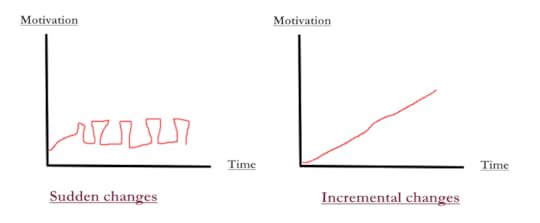Best Practices for Getting Ripped and Killing it (in the gym)
 I was talking to my friend Filip the other day (he’s the guy in the image).
I was talking to my friend Filip the other day (he’s the guy in the image).
We were discussing some of the mindsets and best practices behind getting ripped and having great gym workouts. Or as I call it — the philosophy of rippedness.
It was surprising, for us both, to notice how similar the core ideas of our gym-ideologies are.
In this article I’ve summarized some of our main ideas and practical tips.
Both Filip and I got ripped pretty fast after having set out to achieve that goal. He did it in just 1,5 years, while it took me roughly 2 years.
Actually, I think Filip had the fastest physical transformation I have ever seen. When we were 17-19, and still in high school (gymnasiet, as it’s called in Sweden) he went from looking like a little kid to looking like an Adonis.
The strangest part is that he didn’t even eat very healthy food. I thought it was unfair.
So I would tease him and say that he took steroids. This made him angry, as it discredited his hard work (I feel a little bad now). He worked out nearly every day at the time.
How his transformation happened so quickly, and how he grew so strong (he bench presses nearly 2x his bodyweight), was an enigma to me and many others at the time. We were extremely uninformed about fitness and nutrition.
We thought we couldn’t build muscle unless we ate lots of tiny meals all the time and, the idea of fasting would never have struck us as intelligent back in those days.
Anyway, despite my insinuations, Filip did not take steroids and never has. He’s just freakishly focused.
I’ve been to the gym with Filip a bunch of times and I’ve never seen anyone with more RAW intensity.
I’ve asked him lots of times what goes on in his head during workouts. He hasn’t been able to give me any detailed answer, as it seems like most of what he does, he does unconsciously — he just gets into this intense flow state.
So I asked him to think it over for a few days and pay extra attention what he does.
He did that — and these are the things he came up with. . .
Filip’s Advice for Killing it in the Gym
#1 Think of NOTHING when you do a set
Filip refers to this as mindfulness:
When I do a set I let go of all my thoughts and focus completely on the muscle I am working. To really feel your muscles and to be able to contract them as tightly as you possibly can when you lift is the most important thing in the gym, in my opinion. It can be hard to focus on just ONE muscle, and letting go of everything else, but I think mindfulness (in general) is a good way to practice what I call “entering a specific muscle”.
I think it takes a while for a “newbie” to learn how to really consciously FEEL his or her muscles.
I strongly concur with this. Most people I see in the gym are mindlessly going through the motions — there’s no intent in what they’re doing. No force of will behind the movements. They don’t want to face the pain.
#2 Always do drop sets .
For example, say I’m doing shoulder press with 30 kg dumbbells, I’ll drop down to 17,5 kg dumbbells after I’m too tired to do another set on the 30 kg ones. That way I am able to push out more reps than I would have otherwise.
A drop set is when you start with a heavy weight and do as many repetitions as you can with it until you reach failure. After reaching failure you immediately use a less heavy weight (I like to drop down to 50 % of the heavy weight) and lift until failure again.
#3 Failure trumps form
When you get tired — and reach failure — it’s more important that you try for another rep, even if it’s shitty form, than it is that you give up.
Try not to use a spotter (unless you’re lifting really heavy), because if you do that then you’ll KNOW that you can lift that weight, and that’s not mentally challenging or risky enough for you. You want to put yourself in a position where it’s EAT OR BE EATEN, where the reptile part of your brain takes over and you’re forced to lift that weight. As opposed to half-heartedly lifting the weight with assistance from a spotter.
Obviously, this is for big boys only.
#4 Flex after workouts
I think it’s a very good idea to flex your body as hard as you can after a workout to see the results; try to see different parts of your body that can be improved, and think about how this might be done best.
I also like to think about — and visualize myself — working out as I go about my day.
#5 Some muscles you have to SLAUGHTER . . .
. . . Such as calves.
For those muscles you have to go over a certain threshold to reach great results. I’m not sure where this threshold is, but I can feel that when I pass that threshold, the muscle feels very different, it’s as if you have to put it through a serious beating before it understands that it’s supposed to grow!
Interpretation: What he means by that is that you need to do a lot more sets than you are initially comfortable with.
In my opinion these are the muscles that must be “slaughtered”:
Calves
Wrists
Triceps
Stomach (if you’re doing it, which shouldn’t really be necessary if you are doing heavy compound lifts)
Thanks for the tips, Filip!
I realize some these tips may seem like total bro-science. Nonetheless I stand by their value. These things work great for me and Filip — and, hopefully they will work well for you too.
Also, so-called science related to working out or bodybuilding is usually not the most trustworthy sort of science. Self-experimentation is much most important, as people have different bodies.
Now, let’s get into my advice.
Ludvig’s Mental Principles for Killing it in the Gym
#1 Create a powerful pre-workout ritual
I’ve thoroughly explained my strategy for becoming addicted to working out.
But here’s a recap:
Create positive associations with working out
Use operant conditioning by tying a reward to working out
Listen to good music and do other things that put you in an upbeat mood
When done together you’ll create an addictive (positive) feedback loop which should effortlessly put you into flow.
#2 Use contrast bias to lift more/heavier weights (than you would otherwise be able to)

Contrast bias displayed visually.
Contrast bias is the reason your brain does not evaluate things objectively, but always in relation to something else. A good example being how contrasting colors stand out.
You’re using contrast bias to your advantage in the gym when you:
Do lighter drop-sets after your original set (Example: original set = 30 kg dumbbells | drop-set = 20 kg)
Do pyramid sets (Example: 50 kg, 75 kg, 100 kg, 75 kg, 50 kg)
Contrast bias is the reason why doing a drop-set of several lighter repetitions is easier than doing one more repetition with the heavy weight. Physically speaking, this may be just as hard, but mentally it is perceived as easier by your brain.
I say it all the time, but it bears repeating: The mental aspect of gym-going is probably more important than the physical aspect. Mind over matter.
#3 Belief is important — always stretch it
Henry Ford said that “Whether you think you can or whether you think you can’t, you’re right,” and when it comes to working out or lifting weights in the gym, I find this to be the case most of the time.
It is rare that I can lift more (repetitions) or heavier (weight) than I believe I can. I think Filip’s idea of not using a spotter — “eat or be eaten” — so that you feel less secure, works by the same logic.
So what I do every workout is that I try to do a little more than I believe I can do, whether that means doing a few more reps or setting a new 1 rep maximum record. I always try to break records and usually I succeed.
If I’m out running and I’m almost home and I feel like I can barely make it, I’ll force myself to go around the block one more time before coming home.
Real-life example of #2 and #3:
Some time ago I broke my record in deadlift. I tried to do one rep on 200 kg and failed twice. On my third try I succeeded. My next set I did 3 repetitions on 190 kg, with a short rest in between each lift.
Question: Why was it harder for me deadlift 200 kg once than it was for me to do 3 reps on 190 kg?
1) Because of contrast bias:
Had I started with 210 kg (and failed) I would perhaps have made the 200 kg lift on my first try instead. Dropping down from 200 kg to 190 kg creates a mental contrast which makes the brain perceive it as easier.
2) Because of belief:
I have done 190 kg deadlifts many times. I know in my mind that I can do it because I’ve easily done it before.
I had never successfully done a 200 kg deadlift before — so, of course I did not feel confident I could do it. There was a mental barrier to overcome.
#4 Use incremental change to break records and increase motivation
It is easier and often better to change things a little bit at a time — incrementally — than it is to make big sudden changes. There are many reasons for this. . .
. . .Where a major reason is motivation.
When you break a record or outdo yourself you get lightning-fast positive feedback that motivates you. Motivation in turn is incredibly important and you should consider it a scarce resource (like time and energy).
By stepping up your workouts incrementally you’ll receive more total motivation than you will compared to if you made just one big sudden step.
A person who is new to the gym and has a maximum potential of 100 kg in bench press (that he does not know of) is better off increasing his record many times over by 2,5-5 kg at a time, compared to if he were to do it once at 70 kg and then one more time at 100 kg. Make sense?

Real-life example of #3 (belief) and #4 (incremental change):
I try to stretch my belief so that it becomes “logical” for me to be able to do something. For example, recently I did 4 slow repetitions of dumbbell bench press with 47,5 kg. But at the same time I had never done a single repetition of 100 kg normal bench press. This angered me.
So I told myself I should easily be able to do one repetition of 110 kg bench press. . .
. . .But not immediately.
Instead, I got there incrementally — by breaking my record a little at a time over 2 weeks. 100 kg one workout. 102,5 kg the next time, followed by 105 kg, followed by 107.5 kg, and finally 110 kg the last one. This does two positive things for me:
Makes me happier (more motivated)
Gives me a stronger belief (because it is based in more repetitions)
#6 Speed up your recovery time and stay focused
Warren Buffett says that even if you have really high IQ, without being rational you won’t be able reach your intellectual potential.
The same principle holds true when you’re lifting.
You may have the physical potential to do a 200 kg deadlift, but if your mental focus is off you probably won’t be able to lift more than 170 kg that day. And to stay mentally focused you need to relax.
Here’s how I do that:
I make sure I am breathing properly — into my stomach, not my chest
Before doing a heavy lift I shake my body to loosen up, exhale and relax my muscles (this looks weird, but it works)
I check my pulse by holding my hand over my stomach.
Checking my pulse also acts as a way to gauge my awareness level and it calms me down, because my mind has learned to associate it with relaxing.
#7 Using “power moves” to boost your state
This one is a little bit wacky, but it also works.
(Warning: People may think you’re a retard.)
“Power moves” are physical movements that boost your motivation and, with practice, can put you in flow state. They work by two principles:
Association and repetition
By affecting your physiology (this is why power posing works)
I like to use certain power moves in combination with my pre-workout ritual. They help me go from being rational and logic to putting me in a meditative state where I’m focusing on my body and not thinking so much. The more you practice, through repetition, the better it gets. I like to:
Use power posing and put my hands above my head (I do this while running as well when I’m really tired and feel like quitting)
Rhythmic movement to whatever music I am listening to
Flexing my body as hard as I can (ABF — always be flexing!)
#8 Create and use a “lock-in” move
A lock-in move is like an upgrade to power moves. I like to do it right before challenging lifts or after breaking a record.
There are two reasons why you want to do them:
Get extra motivation
Lock-in this moment in your memory
I know what you’re thinking: What does memory have to do with working out or lifting weights in the gym?
A lot actually — because it builds your belief.
The more emotional intensity and detail you can add to a memory, the better you will remember it. The better you remember something the more you believe it and the more confident you get.
So — each time you do something you’re proud about in the gym you want to “lock-in” that moment.
I do this by making a clap, that’s my lock-in move.
Again, this is for big boys only. Most people don’t dare to do this, and risk looking weird.
Maybe you don’t like clapping your hands as much as I do. But the trick here is not in the specific movement, it’s about how it makes you feel.
Try out different movements and see which ones make you feel the most powerful.
If you’re clueless about what power moves you can use. . .
. . .Here’s some inspiration:
Or check this video after 4 min 22 sec.
Do you have any best practices or mental tips related to working out?
Photo credit: Wikipedia
The post Best Practices for Getting Ripped and Killing it (in the gym) appeared first on Startgainingmomentum.



